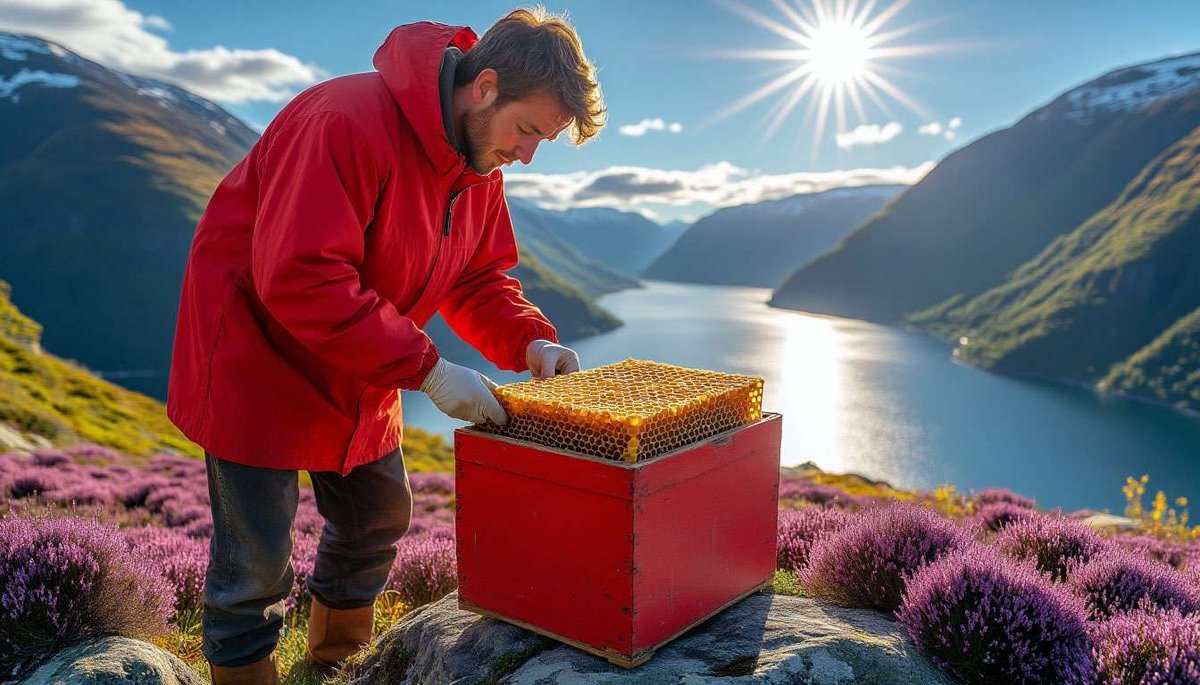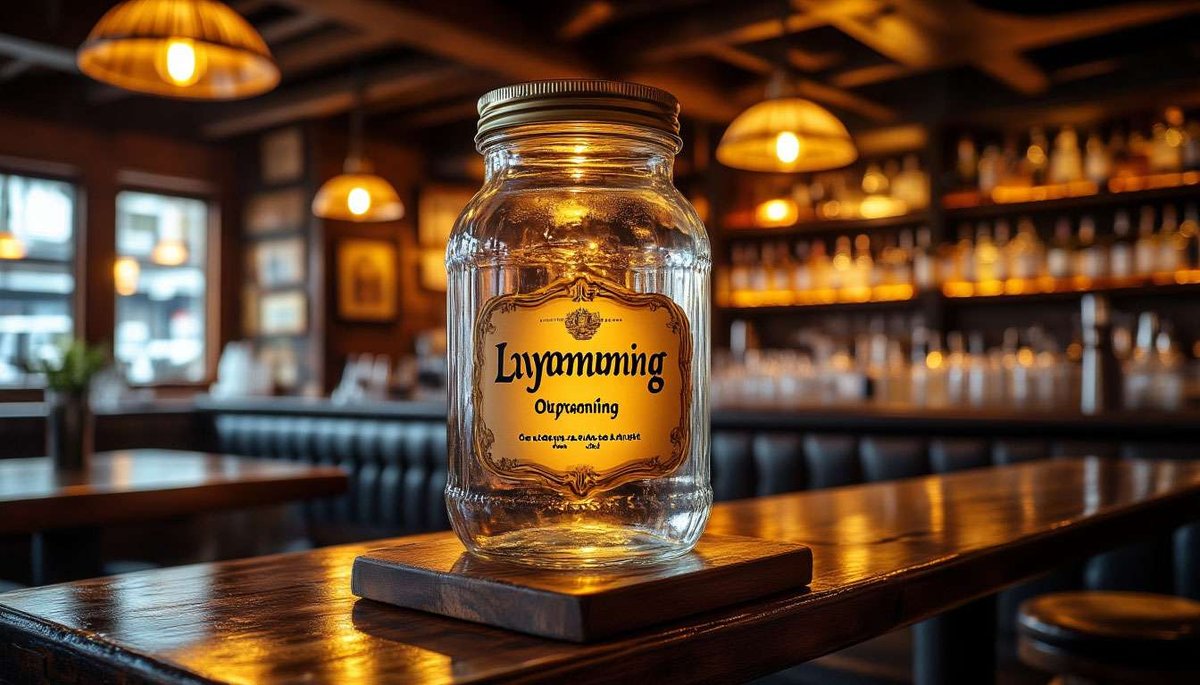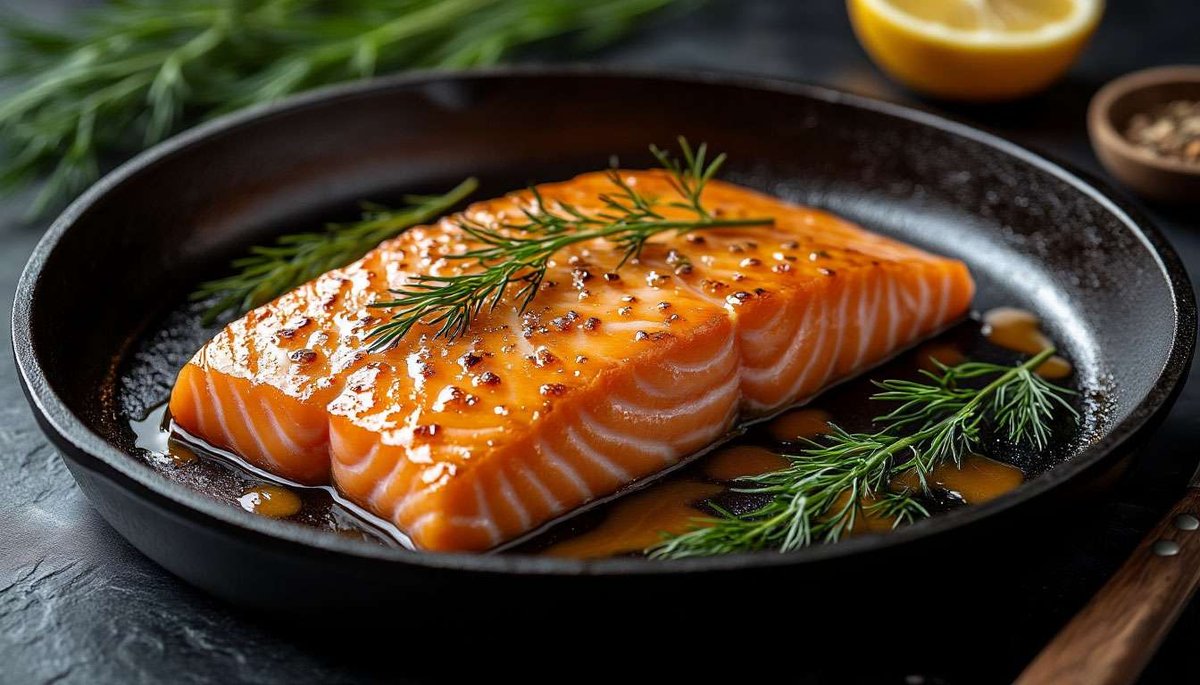Honey from the fjords: Lynghonning heather honey, Blomsterhonning flower honey and bee farms in Norway
Honey in Norway absorbs the clean air of the fjords, long summer days and the aroma of northern herbs. Bees work only six to eight weeks a year, so each jar is a concentrate of a short and bright summer. The most famous variety is the tart heather Lynghonning, but the floral honeys from the apple orchards of Hardanger and the mountain meadows of Røros are just as interesting. Let's take a look at the different varieties, where to find them and how to use them in the kitchen.
What are the main types of Norwegian honey and how do they differ?
- Lynghonning (heather) — amber-dark, slightly bitter with a caramel pine aftertaste; harvested in August, when heather turns the slopes of the fjords lilac.
- Blomsterhonning (flower) — light golden, mildly fruity; bees collect nectar from dandelions, clover and meadow grasses in June.
- Fruktblomshonning — honey from the apple orchards of Hardanger; the taste is reminiscent of cider and goes well with Brunost cheese.
Varieties differ in their mineral salt and antioxidant content: Lynghonning has up to 20% more due to heather nectar.

How to choose high-quality honey and what certificates to look for?
Look for the green Debio label, which guarantees organic origin: the hives are located in a 3 km pesticide-free zone. The local Nyt Norge label confirms that the honey has been harvested and packaged in Norway. Real Lynghonning crystallises slowly and forms a thread; if it is runny and has no aroma, it has probably been heated.
Where can you buy the best honey and how much does it cost?
| Location | Variety | Price (2025) |
|---|---|---|
| Mathallen Oslo – Honninghuset shop | Lynghonning 250 g | 89 NOK |
| Bondens Marked Bergen – Hardanger Bie stall | Fruit blossom 350 g | 95 NOK |
| Rørosmartnan winter fair | Fjell honey 500 g | 110 NOK |
| Coop Mega supermarkets (Lokalmat shelf) | Blomsterhonning 250 g | 69 NOK |

Tip: choose glass jars; plastic is often used for mixed European blends.
Is it possible to visit a Norwegian apiary?
Yes. The Alde Sideri (Hardanger) and Lykkelig Bie (Østfold) farms offer Bee Safari tours: a tour of the hives in protective suits, tasting six types of honey with cheese and cider (390 NOK). Children are given bee flower seeds to plant at home as part of a pollinator support programme.
How can Lynghonning be used in cooking?
Heather honey can withstand high temperatures and has a distinctive flavour, so it is added to:
- In a glaze for baked salmon (2 tablespoons of honey + soy sauce + mustard).
- In salad vinaigrette (Lynghonning + cider vinegar + rapeseed oil).
- In the dessert Tilslørte Bondepiker, replacing sugar with honey gives the berries and cream a light pine note.

How to store and transport honey from Norway?
Store at 10–18°C, away from direct light — heather honey is rich in enzymes that are destroyed when heated above 40°C. When travelling by plane, pack it in your luggage (liquid > 100 ml) and wrap the glass jar in a sweater. Honey is not a prohibited product and is not subject to customs restrictions.
Norwegian honey is an edible postcard from the short northern summer. The tartness of heather, the fruity delicacy of the Hardanger gardens or the pure freshness of the mountain meadows of Røros are transformed into a spoonful of amber sweetness that will take you back to the sound of waterfalls and the scent of flowering herbs during the long winter. Visit the Bee Safari farm, buy a jar of Lynghonning at the market, or simply add a teaspoon of honey to your morning yoghurt and feel Norwegian nature unfold in every golden glimmer.





2 comments
Log in to leave a comment